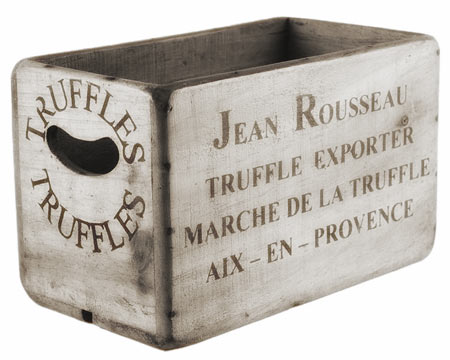
For the past eighteen years, we have featured truffles on our menu, cumulating with our annual Truffle Dinner in late November. This year is no exception as we look forward to the fall truffle season. Below is a brief description of truffles.
Truffles have fascinated people for thousands of years. Their attraction is a tantalizing taste and aroma which, once experienced, is never forgotten. The taste and aroma of commercially-collected truffles are so intense that they are used as a flavoring instead of a separate dish.
The “White Truffle” grows spontaneously in the rich clay soil of the hilly region of the Monferrato in northern Italy. The “Tartufo Bianco” (white truffle) is the most coveted of the underground mushrooms and is often referred to as “The White Diamonds of Piedmont.” It is the crème de la crème of the underground tubers, more delicate and prized than the “Black Truffle.” Currently,
a pound of “Black Truffle” fetches $500 to $850 and “White Truffle” between $2,000 to $2,800 per pound, making truffle one the most expensive food items in the world. The name “truffle” has been borrowed to describe small, fancy chocolate candies, another expensive and delicious food. Real “Black Truffle” are roundish, brown, and dirty when they come out of the ground. They are the fruit of the truffle organism, like apples are the fruit of an apple tree.
Truffles, which vary from the size of a nut to an egg, are finicky mushrooms that grow only in loose, humid, sun-soaked soil, particularly beneath elm and oak trees. The harvest season for “Black Truffle” runs from November to the beginning of March, and the season for “White Truffle” from October to the end of December.
So, what exactly does one do with truffle? They are meant to be served uncooked because as their scent is powerful, their flavor is delicate. Mostly they wind up shaved as ambrosial toppings for salad, pasta or risotto. They are also used to infuse oils and butter to compliment the shaved truffle toppings.

